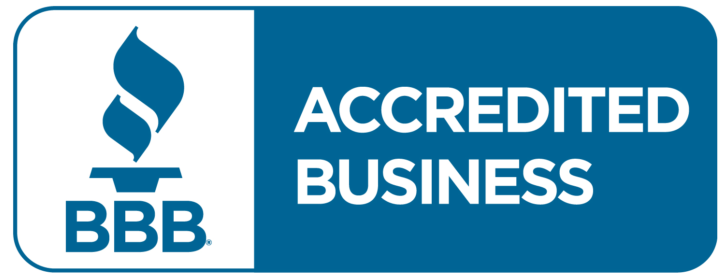While the LIFO conformity rule provides benefits, it also presents challenges for taxpayers. One challenge is that the LIFO method may not accurately reflect the taxpayer’s actual inventory levels or costs. This is because the LIFO method assumes that the last items purchased are the first items sold, which may not always be the case. Another challenge is that the LIFO method may result in higher tax liabilities in periods of inflation. This is because the LIFO method values inventory based on the most recent purchase prices, which are typically higher during periods of inflation.
- This rule has several implications for businesses, but businesses have several options to comply with it.
- The LIFO conformity rule requires that, if the LIFO cost flow method is used to compile taxable income, it must also be used in the financial statements.
- The dynamism of the real estate market is a reflection of various economic, social, and political…
- Additionally, taxpayers may be allowed to use different inventory accounting methods for tax and financial reporting if they can demonstrate that the methods are more accurate or appropriate for their business.
AUD CPA Practice Questions: Reporting Requirements Under GAGAS
This means that if a company uses the Last-In-First-Out (LIFO) method for tax purposes, it must also use the LIFO method for financial reporting. The LIFO conformity rule has significant implications for financial reporting, including impacts on a company’s financial statements, tax liabilities, and overall financial performance. To optimize inventory management, companies should consider adopting best practices, such as regular inventory monitoring, accurate forecasting, and efficient supply chain management. They should also evaluate the pros and cons of different inventory accounting methods and choose the one that best suits their operations and goals. Moreover, they should ensure compliance with tax regulations and financial reporting standards, including the LIFO conformity rule.
This makes the decision to adopt LIFO a long-term commitment that requires careful planning and consideration. In practice, this means that Walmart’s financial statements reflect a higher COGS and lower ending inventory value compared to what would be reported under the first-in, first-out (FIFO) method. As a result, Walmart’s net income appears lower than it might under FIFO, providing a more conservative view of profitability.
Implications of the LIFO Conformity Rule
Thus, the LIFO method results in a higher cost of goods sold (and therefore lower profits) than the FIFO method. The LIFO (Last-In, First-Out) method is an inventory accounting method that assumes that the last items purchased are the first items sold. This method is commonly used by businesses to reduce their taxable income by matching the most recent, and usually more expensive, inventory purchases with sales revenue. The LIFO method is allowed under the US generally Accepted Accounting principles (GAAP) but is not allowed under the international Financial Reporting standards (IFRS).
Ultimately, the best option is the one that aligns with your business goals and objectives. In 1974, the tax Reform act allowed businesses to use LIFO only if they had been using it the lifo conformity rule states that if lifo is used for: consistently since 1969. The increase in multinational companies and the disparity in financial reporting standards among countries add to the complexity of satisfying the LIFO conformity rule.
The landscape of inventory accounting and the LIFO Conformity Rule has seen notable changes in recent years, driven by evolving economic conditions and regulatory updates. One significant development is the increased scrutiny from regulatory bodies like the Financial Accounting Standards Board (FASB) and the Internal Revenue Service (IRS). These organizations have been focusing on ensuring that companies adhere strictly to the LIFO Conformity Rule, particularly in light of global economic uncertainties and inflationary pressures. This heightened scrutiny means that businesses must be more diligent in their inventory accounting practices, ensuring that their financial statements and tax filings are consistently aligned. LIFO conformity rule can affect your financial statements, particularly your balance sheet and income statement. While it can increase your cost of goods sold (COGS) and reduce your taxes, it can also lower your net income and decrease your inventory value.
The detail of the nonoperating items could be presented in a supplement to the income statement or in the notes to the income statement. The detail of the nonoperating items is presented in Supplement 1 to the income statement. One such challenge is the potential for a LIFO reserve, which is the difference between the inventory reported under LIFO and what it would have been under FIFO. This reserve can become substantial over time, especially in industries with significant price volatility. If a company decides to switch from LIFO to another inventory accounting method, the accumulated LIFO reserve must be recaptured and reported as income, leading to a substantial tax liability.
LIFO Conformity Rule: An Overview and Implications
- For example, small businesses with average annual gross receipts of $25 million or less are not required to conform to the LIFO method for tax reporting.
- The LIFO conformity rule is a principle in accounting that requires a company to use the same inventory costing method for tax and financial reporting purposes.
- However, the LIFO conformity rule states that if a company uses LIFO for tax purposes, it must also use LIFO for financial reporting.
- Therefore, businesses must weigh the benefits of tax savings against the potential drawbacks in financial reporting.
We help clients maximize tax credit savings through expert guidance and a range of services tailored to their needs, ensuring compliance and optimizing benefits. Source Advisors offers a comprehensive range of resources designed to help clients maximize their tax credits savings for their businesses. This article discusses ways to avoid this problem and provides illustrations of alternative reporting statements. The company bought 100 widgets for $10 each at the beginning of the year (a total of $1,000) and another 100 widgets for $20 each in the middle of the year (a total of $2,000). PwC refers to the US member firm or one of its subsidiaries or affiliates, and may sometimes refer to the PwC network.
Current developments in taxation of individuals: Part 2
Since the LIFO conformity rule limits the amount of LIFO reserve that can be used to reduce taxable income, businesses may have to pay higher taxes. This is because LIFO reserve is a deferred tax liability, and reducing it reduces the amount of taxable income. Therefore, businesses that use LIFO may need to consider using another inventory accounting method to reduce their tax liability. While the LIFO conformity rule can be a useful accounting method for businesses, it also comes with its own set of disadvantages. From inaccurate inventory valuation to tax implications, inventory management challenges, and inflexibility, businesses need to carefully weigh the pros and cons of using the LIFO conformity rule before implementing it. Ultimately, the best accounting method for a business will depend on its unique needs and circumstances.
Understanding Non-controlling Interest: Types, Calculations, Reporting
Understanding the implications of the LIFO Conformity Rule is essential for businesses as it influences not only their tax liabilities but also their reported earnings and overall financial strategy. If they sell only 50 units of the product, the LIFO method would assume that the first 50 units sold were the ones purchased for $15 each, leaving 100 units of the product purchased for $10 each unsold. IFRS does not recognize LIFO, yet taxpayers with business operations outside the United States are often required to provide restated financial information that complies with IFRS.
This led to the introduction of the LIFO conformity rule, which required businesses to use LIFO for both tax and financial accounting purposes. The LIFO conformity rule requires that, if the LIFO cost flow method is used to compile taxable income, it must also be used in the financial statements. Given the effects of inflation, the older items in stock are presumed to have been acquired at a lower cost than the more recently-acquired items.
These methods may be more appropriate for businesses with stable or decreasing inventory costs, or those that operate in states that do not conform to LIFO accounting. The LIFO conformity rule has significant implications for inventory management since it affects how companies value and report their inventory on their financial statements. Under LIFO, the cost of goods sold (COGS) is based on the most recent inventory purchases, which can result in higher COGS and lower net income compared to FIFO. Therefore, companies that use LIFO may need to adjust their inventory levels to maintain adequate stock levels and avoid shortages.
Financial statement preparers for U.S. entities that are members of larger consolidated groups with foreign operations or ownership need to be aware of what is and is not allowable to avoid violating the conformity rule. Not all states conform to federal tax laws regarding LIFO, which can create discrepancies in tax reporting. Companies operating in multiple states must navigate these differences, often requiring sophisticated tax planning and compliance strategies. This complexity can increase administrative costs and necessitate the use of specialized tax software or consulting services to ensure accurate and compliant reporting. LIFO conformity rule can be advantageous for tax purposes as it can reduce taxable income. However, it may not be suitable for businesses that operate in states that do not conform to LIFO accounting.
This is because the reduced tax liability frees up cash that can be reinvested into the business or used to pay down debt. Companies often highlight this aspect to demonstrate the benefits of LIFO in terms of cash management, even if it means accepting lower reported earnings. The LIFO conformity rule is an important concept in accounting that has been in use for many years. This rule dictates that a business must use the same inventory valuation method for tax purposes as it does for financial accounting purposes.
This can result in a lower inventory valuation compared to other methods like FIFO (First-In, First-Out), which can affect key financial ratios such as the current ratio and inventory turnover ratio. These ratios are closely monitored by investors and analysts to gauge a company’s liquidity and operational efficiency. This rule has several implications for businesses, but businesses have several options to comply with it.
The best option for businesses depends on their specific circumstances and needs, and they should consult with their accountants or tax advisors to determine the best option for them. During inflationary times, companies can reduce their taxable income by using the last-in, first-out (LIFO) cost flow assumption for inventories. Businesses that do not find LIFO conformity rule suitable can explore alternative methods such as first-in, first-out (FIFO) or average cost method. FIFO assumes that the first items purchased or produced are the first ones sold or used, while average cost method calculates the average cost of all items in the inventory.

